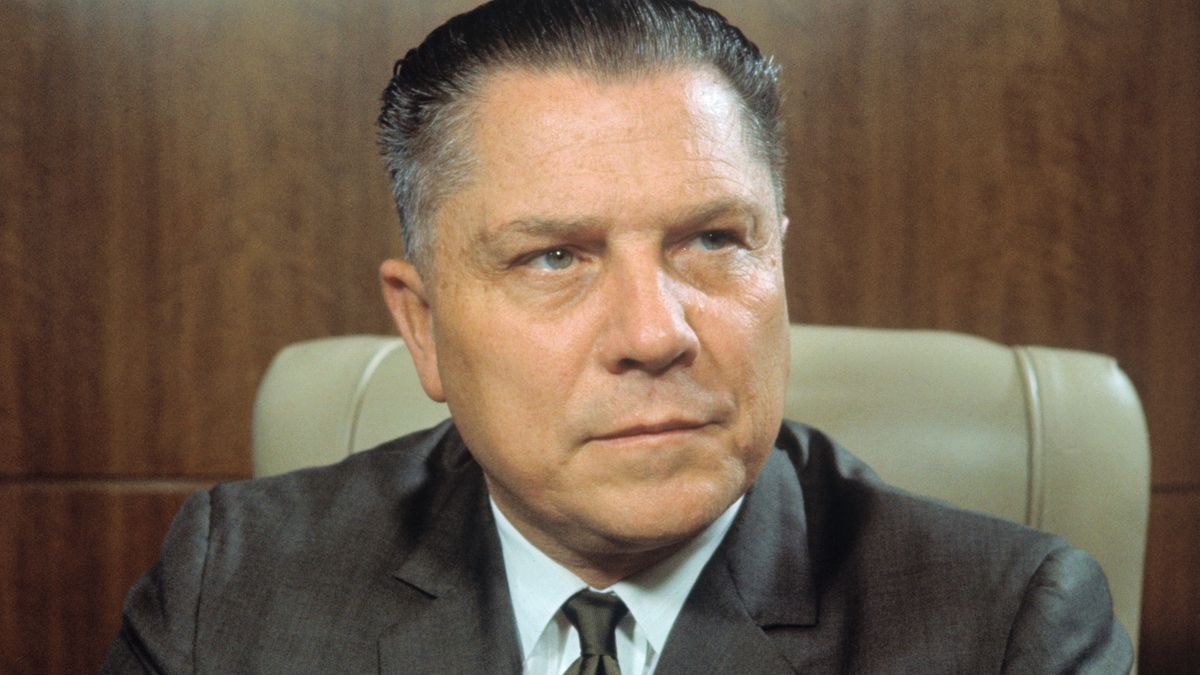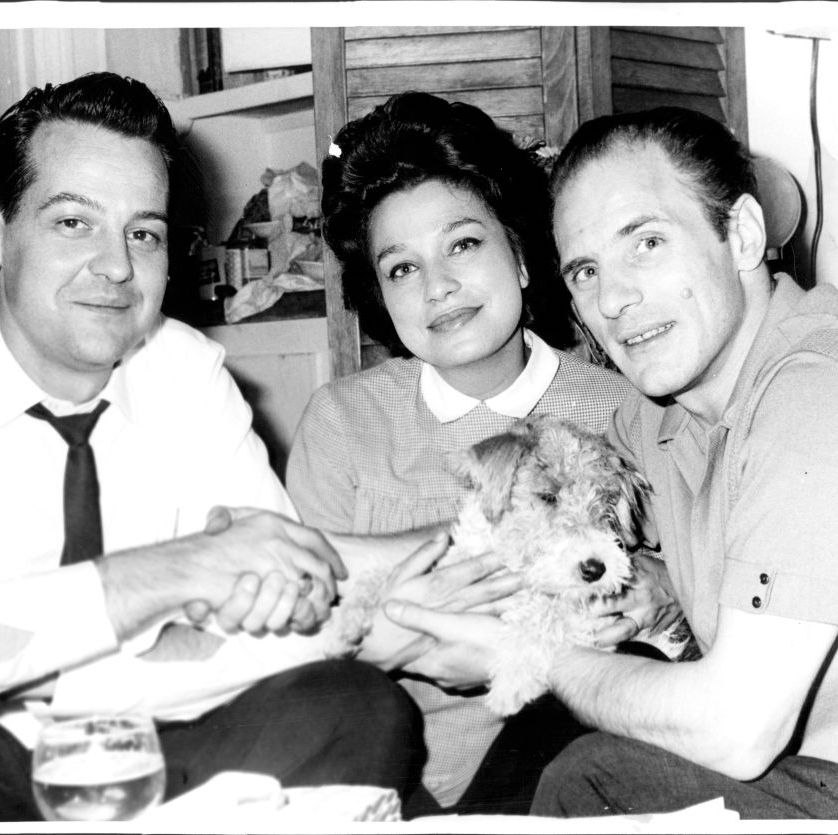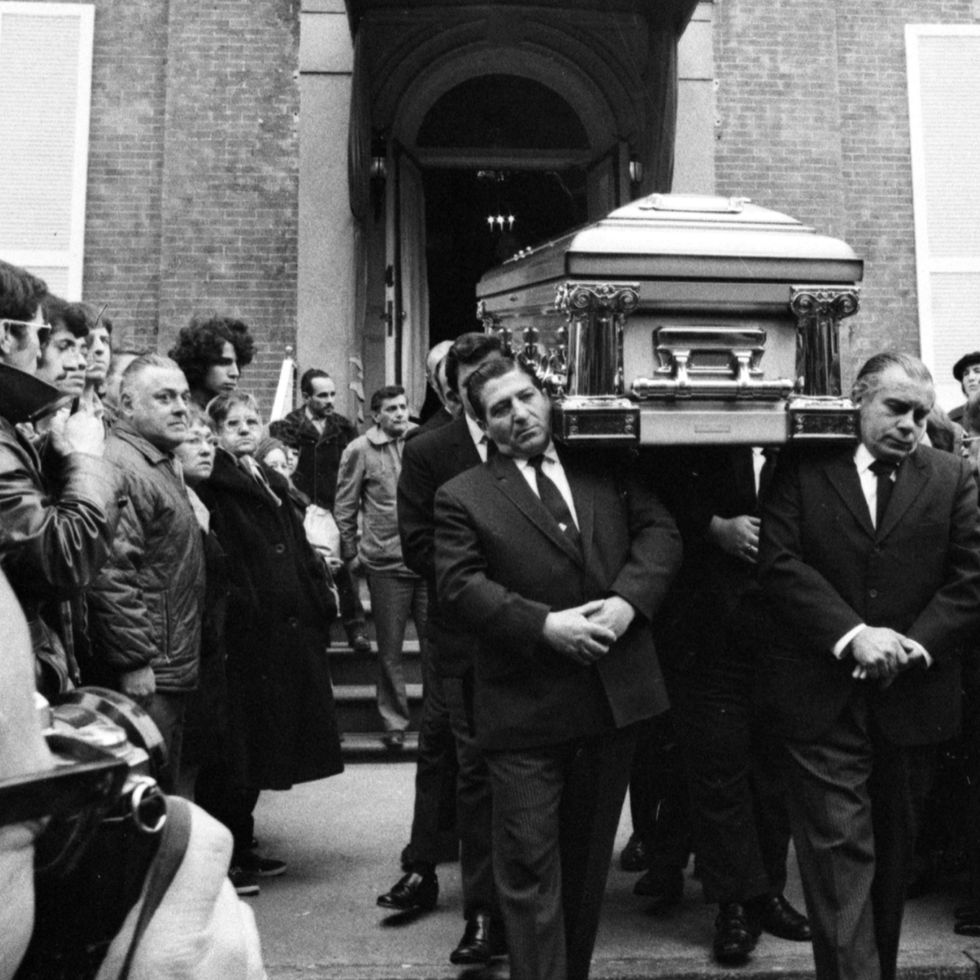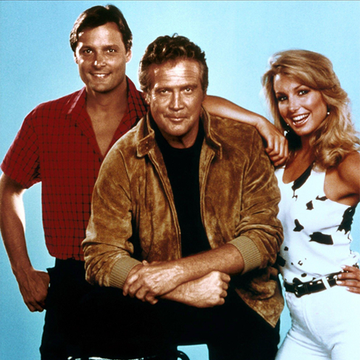The Irishman is full of ripped-from-the-headlines true crime tales, including one of most well-known suspected crimes of the 20th century: the disappearance of Jimmy Hoffa. But the film also depicts another infamous murder, that of Joseph “Crazy Joe” Gallo, who was the victim of one of New York City’s most famous reputed mob executions. In the film, he's played by comic Sebastian Maniscalco – but here’s what you need to know about the real-life figure.
Who was Joseph “Crazy Joe” Gallo?
Gallo was born in Brooklyn, and reportedly began his mafia career working for the Profaci crime family. According to some accounts, Gallo was among the men who killed Albert Anastasia, head of the Anastasia crime family, in the barbershop of New York’s Park Sheraton hotel. (This barbershop murder is depicted in The Irishman, accompanied by a real crime scene photo, but Gallo isn’t shown committing it.)
In the film, Robert De Niro’s Frank “The Irishman” Sheeran notes that early in his career, Gallo allegedly kidnapped his own bosses. "I don’t know how he got away with that,” Sheeran says in the movie. "You don’t get away with that. You do that, you die.”
This seems to be a true story – in 1961, Gallo and his crew reportedly kidnapped and ransomed leaders of the Profaci crime organisation, including the group's underboss. Later, he was convicted on extortion charges, and would spend eight years in prison.
The murder of Joseph Colombo, who headed Joe Profaci’s criminal organisation after his death and in whose honour it was renamed the Colombo family, was also featured in The Irishman. Colombo was shot in 1971 while attending a rally for the Italian-American Civil Rights League, a political group he founded, at New York’s Columbus Circle. He remained paralysed until his death seven years later.
Gallo was rumoured to be behind the killing, in part because he’d become known for associating with African-American fellow criminals during his time in prison, and the hitman who murdered Colombo was black.
Sheeran described the murder to Charles Brandt in his book I Heard You Paint Houses, which serves as the basis for The Irishman. In the book, Sheeran speculated that Gallo likely had permission from high-level mobsters to kill Colombo, who the mafia thought was "putting too much attention on the alleged mob by all these rallies and the publicity they brought,” but apparently the style of the killing didn’t sit well with some criminals, who resented that Gallo allegedly hired black associates and shot Colombo in the presence of his family.
Gallo himself was also reportedly unpopular among his crime lord peers for bringing too much attention to the mob through publicity seeking and friendships with celebrities. Gallo served as inspiration for Jerry Orbach’s Kid Sally in the 1971 film The Gang That Couldn’t Shoot Straight, and later befriended the actor. Gallo was also known for pulling colourful stunts like owning a pet lion, which he reportedly used to menace debtors, and bringing it to a Manhattan nightclub.
How was Gallo murdered?
Much of Gallo’s murder played out similarly to how it was portrayed in The Irishman. As in the film, he spent the night of 6 April, 1972 celebrating his 43rd birthday. He watched comic Don Rickles perform at the Copacabana nightclub, then went to Umberto’s Clam House in Little Italy in the early hours of the morning on 7 April. He was accompanied by his sister, his wife, her daughter, and a bodyguard, when men entered the restaurant and shot Gallo to death.
In I Heard You Paint Houses, Sheeran said that he committed the murder after being ordered to do so by Bufalino. While the film depicted Sheeran diffusing an argument between Bufalino and Gallo before the crime, in the book Sheeran said that he never met Gallo before the murder. Sheeran, an Irish-American, described himself as being the perfect hitman, because he wouldn’t raise his target’s suspicions. "I didn’t look threatening or familiar in any way," he told Brandt. "I looked like just a broken down truck driver with a cap on coming in to use the bathroom, which was not far from the door. I have very fair skin. I don’t look like a Mafia shooter.”
Sheeran also said that executing a man in front of his family ran contrary to mob protocol, but that it was no more than Gallo had reportedly ordered done to Colombo: “Right there in front of his family; they turned the man into a vegetable. So that’s the way it was going to be for Crazy Joey.”
Is Frank Sheeran’s confession accurate?
The problem with Sheeran’s confession, much like his confession to the murder of Jimmy Hoffa, is that it differs from some other accounts of the crime. Sheeran said he was the sole shooter, but witnesses reported four men, not one, executed Gallo. "The stories that are out there say that there were three shooters, but I’m not not saying that,” said Sheeran in I Heard You Paint Houses. "Maybe the bodyguard added two shooters to make himself look better […] I’m not putting anybody else in the thing but me.”
And Sheeran isn’t the only person to confess to Gallo’s murder. In 1972, The New York Times reported that a man named Joseph Luparelli told the FBI that he and four other men had committed the murder on the orders of Joseph Colombo’s successor. (Luparelli later testified against the Colombo organisation, and entered witness protection). Luparelli accused three other men of participating in the crime – none of whom were Frank Sheeran. This account echoes Gallo’s widow’s memory of the crime, which she said was committed by multiple men who she described as short – as opposed to the 6’4” Sheeran – and who appeared to her to be Italian.
Sheeran addressed this rival confession in I Heard You Paint Houses:
Later on, I heard some Italian guy took credit for the whack they put on Gallo. That’s okay by me. Maybe the guy wanted to be a celebrity. Probably the guy turned rat or something. The rats always load up their résumés so the government treats them with more respect. The government loves a rat that gives them a chance to solve the big ones, even if the rat was just a low-life drug dealer who wouldn’t know a big one from his left nut.
Umberto’s Clam House is still standing in Little Italy (albeit in a new location). In 2013, The New York Times reported that the restaurant was still a popular destination for tour guides showing visitors around the city. "It’s not a movie. Somebody lost their life," owner Robert Ianniello Jr. told the paper. "It’s not something that should be – I don’t want to use the word ‘celebrated’ – a stop on somebody’s tour."
Meanwhile, Gallo was immortalised by none other than Bob Dylan, who wrote a heavily-romanticized 1976 song, “Joey,” about the life and death of the underworld figure.
Like this article? Sign up to our newsletter to get more delivered straight to your inbox
Gabrielle Bruney is a writer and editor for Esquire, where she focuses on politics and culture. She's based (and born and raised) in Brooklyn, New York.















